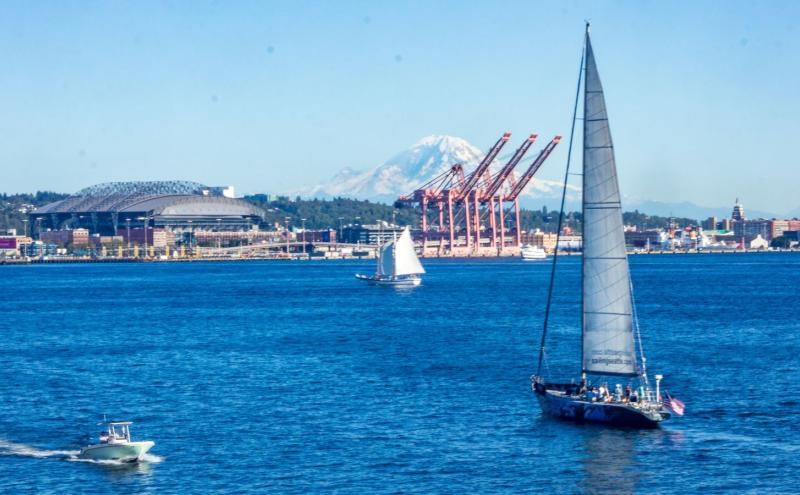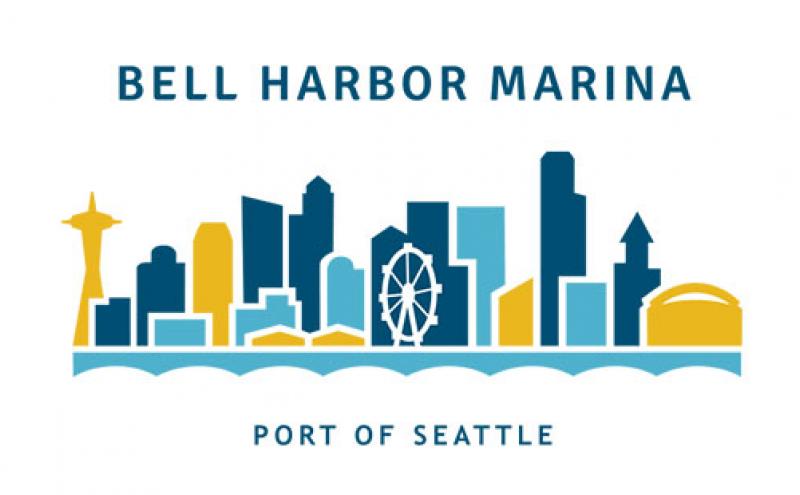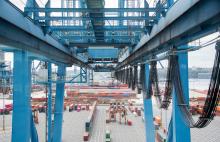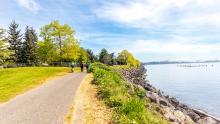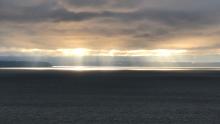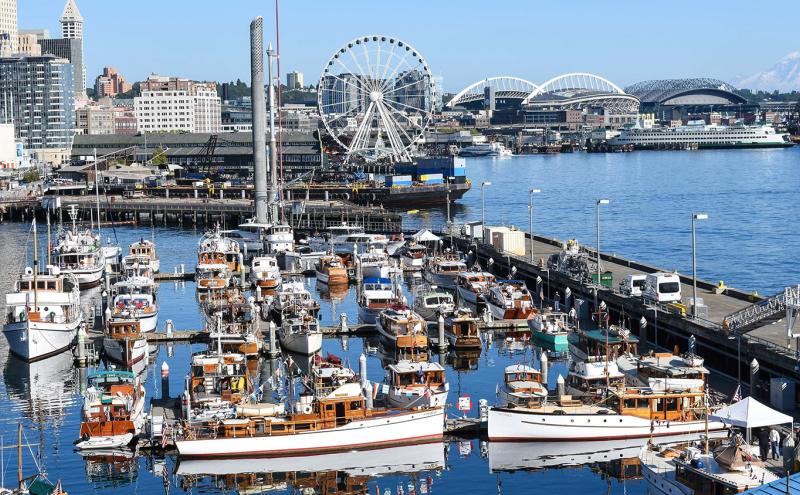
The Bell Harbor Rendezvous is more than just an event — it's a celebration of maritime history and craftsmanship. The Classic Yacht Association and the Port of Seattle are pleased to announce the 28th annual Bell Harbor Rendezvous from 10:00 a.m.–4:00 p.m. on June 14-15, 2025 at Bell Harbor Marina. Admission to the event is free and open to the public.
The Bell Harbor Rendezvous is known for showcasing an extraordinary fleet of classic yachts, each meticulously preserved and maintained by their passionate owners. Walking along the docks, visitors can admire the beauty of these vessels up close, with many owners on hand sharing stories of their yachts' history and the restoration processes they've undergone.
The 2025 marquee class: yachts which served in WWII
Each year Bell Harbor Rendezvous selects a “marquee” or featured type or class of yachts. This year, the marquee class are yachts which served in World War II. Air Snipe, a 1943 110-foot U.S. Navy wooden-hulled subchaser, will be joining the event this year. Many boats in the fleet served in World War II. Here are their stories:
Air Snipe
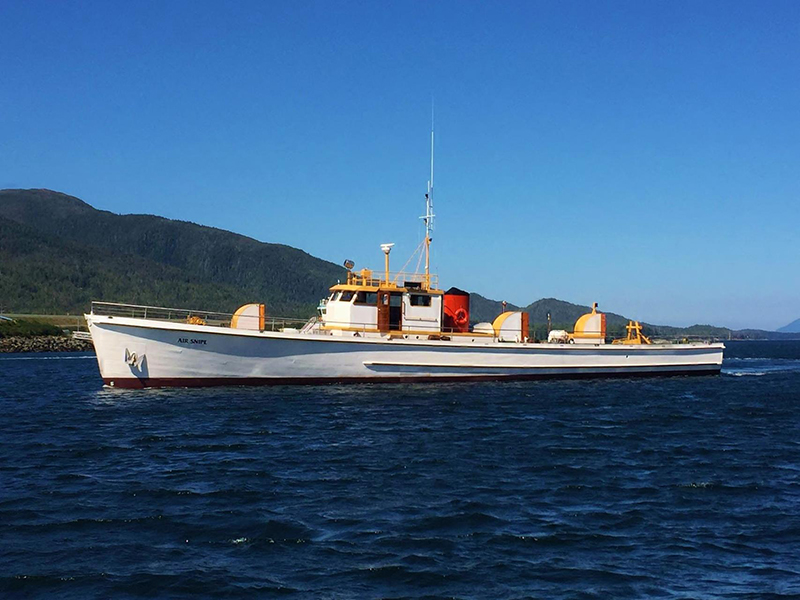
– 110 foot, 1943, Mathis Yacht Co.
The Air Snipe was laid down as SC-1068 in Camden, New Jersey for service with the U.S. Navy during World War II. She first traveled to Dutch Harbor, Alaska, via the Panama Canal, then operated throughout the Aleutian Islands. By 1944, she had been reassigned to the South Pacific, where she earned a battle star for the invasion of Kwajalein and Majuro Atolls. She then spent two years in Seattle with the U.S. Coast Guard as WAVR-465 and was renamed Air Snipe. In 1954, she was sold to private owners and eventually joined the fleet of Boyer Towing, where she operated as a commercial tug until the mid-1990's. Kent Halvorsen of Boyer Towing later restored her and began her fourth career as the company yacht. After Halvorsen’s passing in November 2023, the Air Snipe Foundation was formed to serve as caretaker of this unique piece of World War II naval and Southeast Alaska towboat history.
Blue Peter
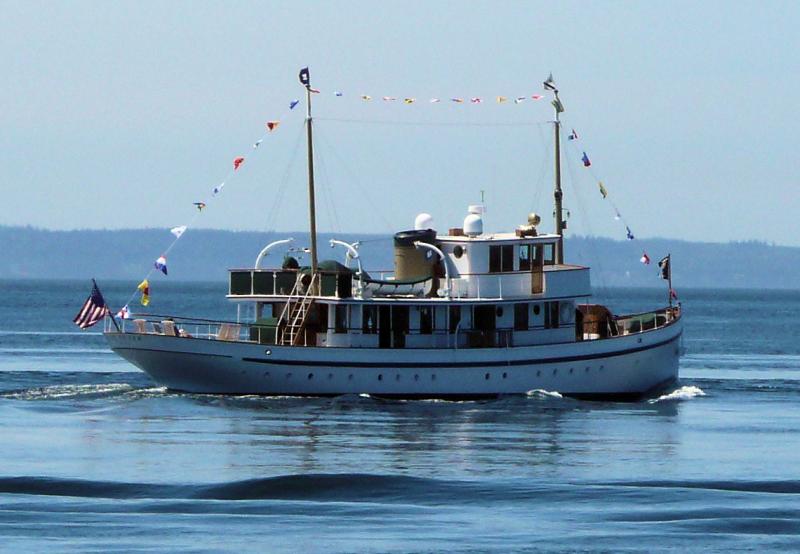
– 96 foot, 1928, Lake Union Drydock
Launched in time for Opening Day of Boating Season in 1928, this classic fantail motor yacht is a true Seattle icon. She served in the U.S. Army during World War II and has operated as a private and occasional charter service in the region ever since.
Carmelita
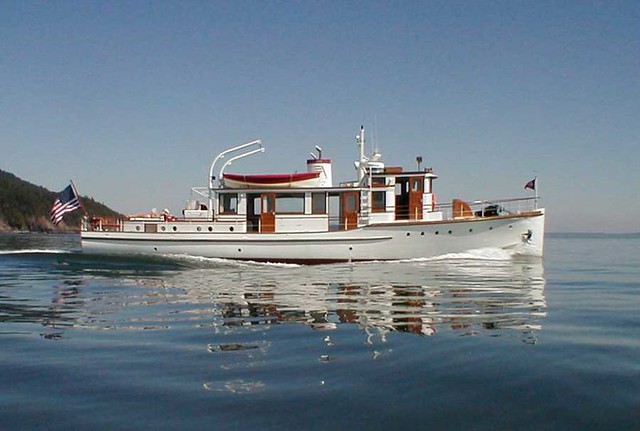
–70 foot, 1935, Mojean & Ericson
Celebrating her 90th year cruising the Pacific Northwest coast, Carmelita has been stewarded by members of the same family her entire life.
Faun
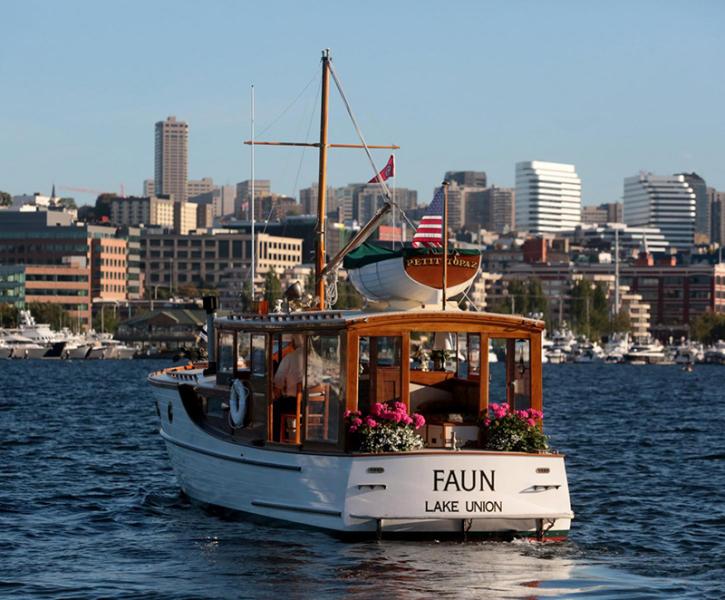
–36 foot, 1926, Blanchard Boat Company
Faun is a 36-foot Blanchard Standardized Cruiser, launched on Lake Union in June 1926 by the N.J. Blanchard Boat Company for W.N. Winter of Medina, Washington. Designed by Leigh H. Coolidge, she was originally purchased for $6000. She is one of 25 Standardized Cruisers built by Blanchard, most of which were 36 feet in length, and is considered one of the most luxurious in the series.
Faun is powered by a 1947 Chrysler Crown six-cylinder gas engine and cruises comfortably at 8.5 knots. Her hull is constructed from Alaska red and yellow cedar, with white oak frames. Her bright work and house are made of Burmese teak. She has her original cast iron stove, a Neptune. A major restoration of her planks, frames, and ribs — everything from the waterline down — was completed between 2013 and 2014.
She has received the following awards: Best Classic Power Under 40 Feet at Seattle Yacht Club’s Opening Day in 2018; Best Overall Power at the Victoria Classic Boat Festival in 2014; and Best Dinghy in 2015. Faun is featured in several books, notably “Classic Wooden Yachts of the Northwest” by Ron McClure (2000). She was featured as Miss October in Benjamin Mendlowitz’s 2010 Calendar of Wooden Boats, and has graced the cover of Northwest Yachting Magazine. She is also the subject of a series of pastels by San Juan Island artist Nancy McDonnell Spaulding.
Gyrfalcon
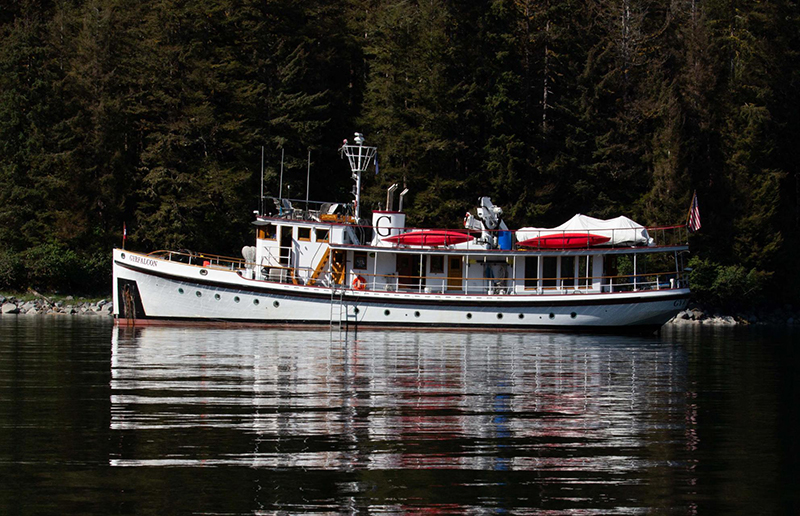
–88 foot, 1941, Sivert Sagstad, Sagstad Marine
In the mid-1930's, the U.S. War Department became convinced that a war with Japan was inevitable. The need for accurate charting of the Alaskan coastline once again became important. H.C. Hanson, a noted naval architect in Bellingham, Washington provided the design plans, and the government funded the building of two ships. One, the E. Lester Jones, was built in Astoria, Oregon, while the other, the Patton ― named for Raymond Stanton Patton, the recently deceased superintendent of the Coast and Geodetic Survey (C&GS) ― was built by Sagstad Marine in Ballard. The winning bid was $149,995. After World War II, and until their decommissioning in 1967, both the E. Lester Jones and the Patton (later renamed Gyrfalcon), continued to survey for the C&GS in the Aleutian Islands, Southeast Alaska, and along the British Columbia coast in conjunction with Canadian surveys.
Mitlite
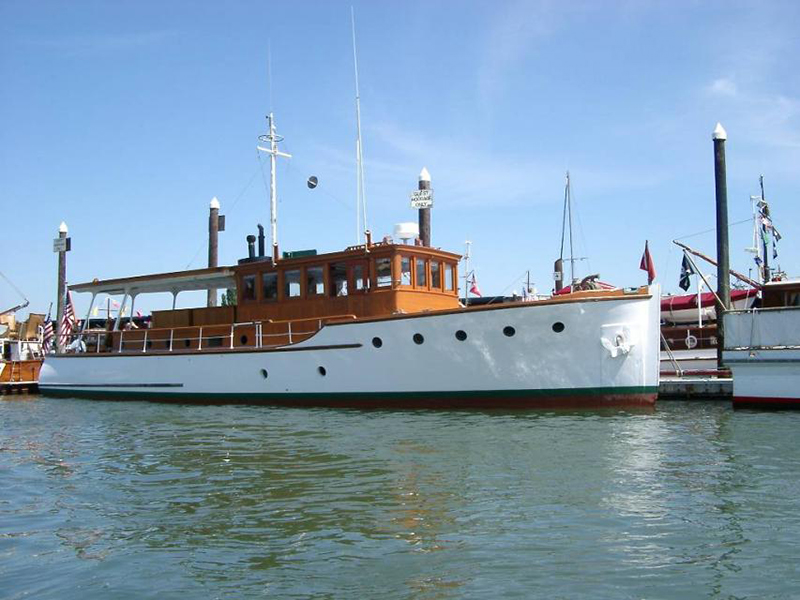
–58-foot, 1933, Foss Shipyard
Mitlite was the only yacht ever constructed by the Foss Launch and Tug Company of Tacoma and was originally christened Thea Foss in honor of the company's founder. The keel was laid in 1929 to keep the Foss Shipyard workers employed during the Great Depression. She was completed and launched in 1933. Her current name, Mitlite, was given by Henry Foss and the boat's second owner, John Metzger, after the company purchased a considerably larger yacht, the Infanta, now renamed Thea Foss. Mitlite was chosen to reflect her status as "little one" ― their smaller Thea Foss.
Riptide
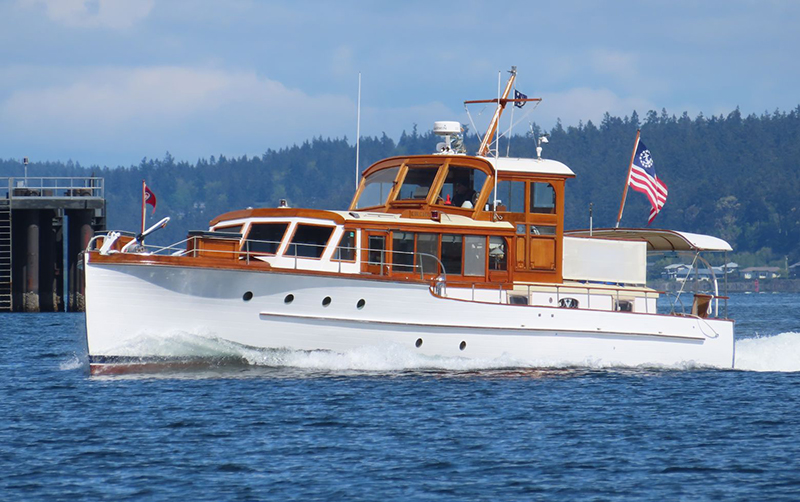
–55 foot, 1939, Elco
A vessel with a storied history, this yacht started as Howard Johnson's private yacht before serving in World War II on Lake Erie. Later she relocated to Lake Mead, where she became a casino showboat for the infamous mobster Mo Dalitz. Later the yacht made her way to Hollywood where she appeared on her own television show ― Riptide.
Seven Bells
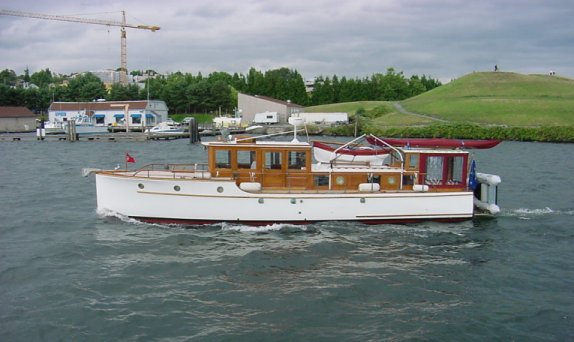
–43 foot, 1929, Stephens Brothers
This 43-foot Stephens Brothers boat was built in 1929 in Stockton, California. It is one of 17 vessels using the same blueprints between 1929 and 1933, with Stephens Brothers hull numbers between 574 and 595. Remarkably, seven of these boats remain in service over 90 years later. In 1942, the vessel was purchased by the U.S. War Shipping Administration and served as an anti-submarine net tender in San Francisco Bay during World War II. The boat was fully restored in 1947 and then again in 1998 after being acquired by its current owner. The hull is made of Port Orford cedar, the house is teak, and the soles are fir. The boat is now powered by fourth-generation Yanmar diesel engines. A set of lace curtains onboard was a gift handmade by a friend’s elderly mother in Milan, Italy.
Mark your calendars for this long-standing Father’s Day Weekend tradition and prepare to be inspired by the beauty and craftsmanship of the classic yachts at Bell Harbor Marina.
Subscribe to Pier to Pier for Seattle waterfront updates
Photos courtesy of the Classic Yacht Association.

